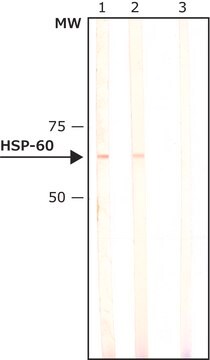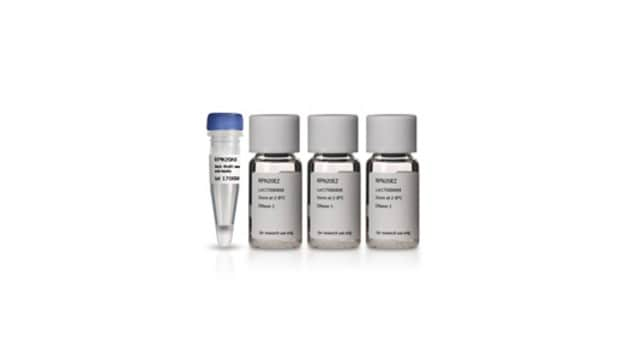MAB4211
Anti-CD34 Class I Antibody, clone B1-3C5
clone B1-3C5, Chemicon®, from mouse
About This Item
Productos recomendados
origen biológico
mouse
Nivel de calidad
forma del anticuerpo
purified antibody
tipo de anticuerpo
primary antibodies
clon
B1-3C5, monoclonal
reactividad de especies
human
fabricante / nombre comercial
Chemicon®
técnicas
flow cytometry: suitable
immunofluorescence: suitable
isotipo
IgG1
Nº de acceso NCBI
Nº de acceso UniProt
Condiciones de envío
wet ice
modificación del objetivo postraduccional
unmodified
Información sobre el gen
human ... CD34(947)
Especificidad
Cell reactivity (Tindle et al., 1985):
Normal: No reaction with normal peripheral lymphocytes, granulocytes, monocytes, erythrocytes and platelets. Reacts with <4% of cells in normal bone marrow.
Clinical: Reaction
Acute myeloid leukemia (AML, M1 and M2) positive
Null lymphoblastic leukemia (Null ALL) positive
Common acute lymphoblastic leukemia (CALL) positive
Myeloblastic and lymphoblastic crises of chronic
granulocytic leukemia (CGL) positive
Chronic myeloid leukemia (CML) negative
T cell acute lymphoblastic leukemia (TALL) negative
B cell acute lymphoblastic leukemia (BALL) negative
Chronic lymphocytic leukemia (CLL) negative
Cell lines:
Reacts with early myeloblast line KG1. No reaction with null, B or T lymphoid, erythroid or later myeloid cell lines.
Inmunógeno
Aplicación
SUGGESTED USAGE DILUTION
1. Flow cytometry and indirect immunofluorescence 1:25
Dilute with isotonic buffer. Use 50 μl of diluted antibody per 1 x 10E6 peripheral blood mononuclear cells (PBMC) or bone marrow cells in 100 μl of buffer.
2. Indirect immunoperoxidase staining - the final dilution will depend on the assay conditions and detection system employed. However, a dilution of at least 1:25 will be applicable to most commonly used systems.
Cell Structure
ECM Proteins
Forma física
Almacenamiento y estabilidad
WARNING: The monoclonal reagent solution contains 0.1% sodium azide as a preservative. Due to potential hazards arising from the build up of this material in pipes, spent reagent should be disposed of with liberal volumes of water.
Información legal
Cláusula de descargo de responsabilidad
Not finding the right product?
Try our Herramienta de selección de productos.
Código de clase de almacenamiento
12 - Non Combustible Liquids
Clase de riesgo para el agua (WGK)
WGK 2
Certificados de análisis (COA)
Busque Certificados de análisis (COA) introduciendo el número de lote del producto. Los números de lote se encuentran en la etiqueta del producto después de las palabras «Lot» o «Batch»
¿Ya tiene este producto?
Encuentre la documentación para los productos que ha comprado recientemente en la Biblioteca de documentos.
Nuestro equipo de científicos tiene experiencia en todas las áreas de investigación: Ciencias de la vida, Ciencia de los materiales, Síntesis química, Cromatografía, Analítica y muchas otras.
Póngase en contacto con el Servicio técnico








